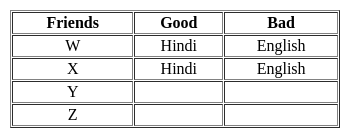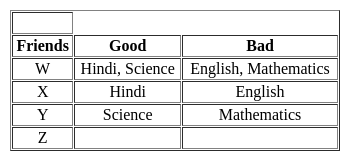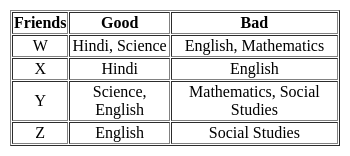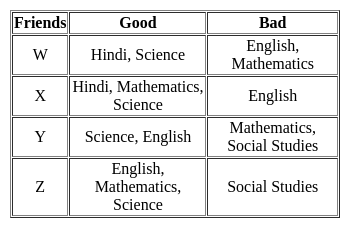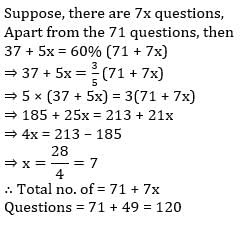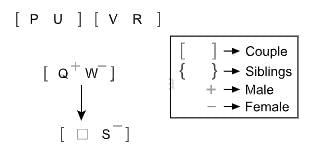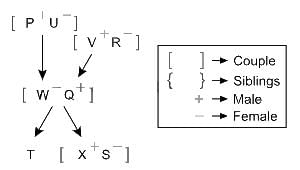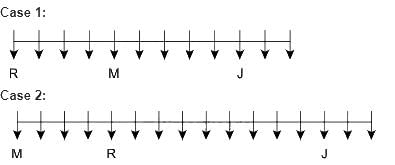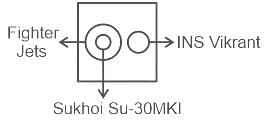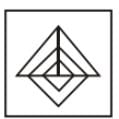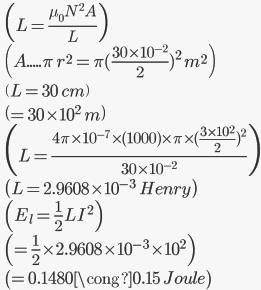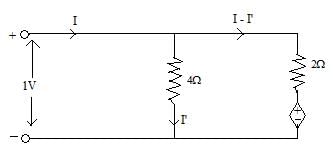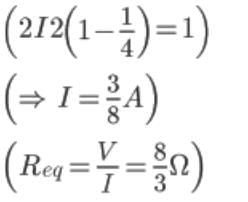MPPGCL JE Electrical Mock Test - 4 - Electrical Engineering (EE) MCQ
30 Questions MCQ Test - MPPGCL JE Electrical Mock Test - 4
Who amongst the following friends is not good in Mathematics but good in Hindi?
Directions to Solve
In each of the following questions find out the alternative which will replace the question mark.
Question -
Race : Fatigue :: Fast : ?
Which revolution in the world inspired the Indians to set up a socialist economy?
Which of the following is not an agent of erosion and deposition
A man bought 17 articles for Rs. 480 each, 15 articles for Rs. 600 each and 18 articles for Rs. 900 each. What is the average cost price per article?
Suresh solved 60% of the question in an examination correctly. If out of 71 Questions solved by Suresh, 37 questions are correct and out of remaining every 7 questions, 5 questions have been solved by Suresh correctly. Then find the total number of questions asked in the examination?
Directions: Each of the following consists of a question and two statements numbered I and II given below it. You have to decide whether the data provided in the statements are sufficient to answer the question:
Nine persons P, Q, R, S, T, U, V, W, and X belongs to a family of three generation where only married couples have children.
How is X related to S?
I. P is married to U. V is married to R. Q is the husband of W. S is the daughter-in-law of W.
II. V is the father of Q. U is the mother-in-law of Q. T is the sibling of X. T is unmarried.
Direction: Study the following information carefully and answer the given questions besides.
Some boys are sitting in a row facing the south. Only three boys sit between O and H. Only two boys sit to the left of J. O sits third to the left of M. More than seven boys sit between P and J. V sits fourth to the right of O. Eight boys sit between R and J. More than 12 boys sit between P and H. Only three boys sit between R and M. T sits third to the right of M. P sits fourth to the right of R.
Q. Who among the following sits 3rd to the right of the one who sits immediate right of M?
Pipes R and T together can fill a tank in 40 minutes. If Pipe R alone can fill it in 90 minutes, in how many minutes can Pipe T alone fill it?
Identify the diagram that best represents the relationship among classes given below:
Fighter Jets, Sukhoi Su-30MKI, INS Vikrant
Direction: If a Paper (Transparent Sheet) is folded in a manner and a design or pattern is drawn. When unfolded this paper appears as given below in the answer figure. Choose the correct answer figure given below.
Which of the answer figures can be formed using the question figure:
Question Figure
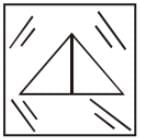
Answer figure
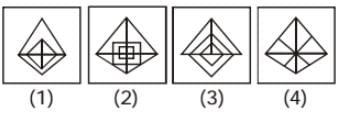
In the short-circuit test on a transformer, we generally short-circuit…………….
The losses in a transformer are:
(a) copper loss
(b) hysteresis loss
(c) eddy current loss
The constant power loss in a transformer is given by ;
The energy stored in the magnetic field of a solenoid 30 cm long and 3 cm diameter with 1,000 turns of wire carrying a current of 10A is-
In the circuit shown in figure, the battery has negligible internal resistance. The power supplied by the battery is
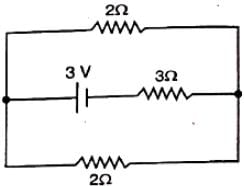
Damper bars in case of salient pole rotors of hydro-alternators are usually inserted in pole faces to
A voltage source having an open circuit voltage of 100V and internal resistance of is equivalent to a current source_____.
"In all cased electromagnetic induction, an induced voltage will caused a current to flow in a closed circuit in such a direction that the magnetic field which in caused by the current will opposed the change that produces the current", is the original statement of____.
In an RLC series circuit, the impedance at resonance is
The circuit shown in the given figure is equivalent to a load of-
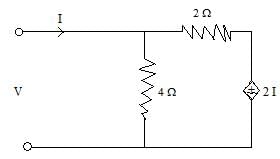
Calculate the total energy stored in magnetic field in a solenoid having inductance 100mH when carrying a current of 30 A –
A circuit has inductance of 2 H. If the circuit current changes at the rate of 10 A/'sec, then self-induced emf is-
The low voltage winding of a 300 kVA, 11000/2200 V, 50 Hz transformer has 190 turns and a resistance of 0.06 Ω The high voltage side has 910 turns and a resistance of 1.6 Ω When low voltage winding is short-circuited, the full-load current is obtained with 550 V applied to h.b. side. What is the equivalent resistance referred to high voltage side?
If the terminals of armature of the D.C. motor are interchanged, this action will offer the following kind of braking-
The equivalent inductance seen at terminal a-b in the figure is-
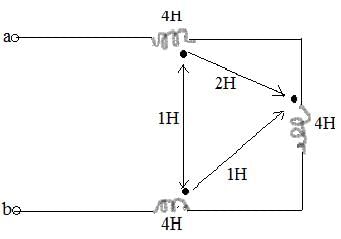
In indicating instruments, the springs are mainly used to-
In reference to the figure, the voltage waveform v9t) is measured by a PMMC, a PMMC combined with bridge rectifier and a moving iron (MI) instrument. Two lists are prepared thereafter :
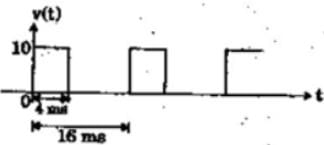
Instrument list List of instrument reading
List - II
a. PMMC
b. PMMC rectifier
c. M.I.
List - II
i. 5 V
ii. 2.75 V
iii. 2.5 V
The correct option relating the instruments and their reading is


